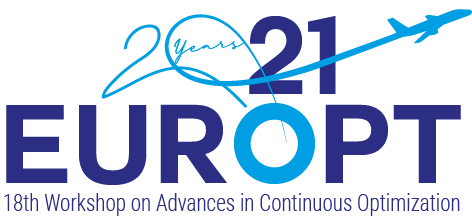WD-06: Energetic and Environmental Applications of Optimization I
Stream: Energetic and Environmental Applications of Optimization
Room: Moreau
Chair(s): Juana Lopez Redondo
Decomposition of long-term investment optimization models for large-scale integration of wind power in Europe
Caroline Granfeldt
To capture the variability in electricity generation from variable renewable energy sources, mathematical modeling of future electricity systems must include a fine discretization of time. However, this leads to huge-scale optimization problems. We have developed a linear optimization model that maintains a high temporal resolution while capturing the most important aspects of the problem to minimize future costs of electricity production. I will discuss how a variable splitting-based Lagrangean relaxation and subgradient algorithm enables a parallel solution process for this model.
ETS, Emissions and the Energy-Mix Problem
Paolo Falbo
We study the impact of ETS on emissions and energy-mix through a bilevel model. At the upper level, a policymaker maximizes a welfare function deciding the number of allowances to distribute to the electricity producers. At the lower level, two large producers decide the long-term capacity expansion among three technologies: renewables, coal and gas. The uncertainty is modelled through Markov chain bootstrapping scenarios, made of coal and gas prices and electricity demand. The problem is solved considering a large set of Pareto efficient solution between the two electricity producers.
Optical characterization of heliostat facets through computational optimization
N.C. Cruz, R. Monterreal, Juana Lopez Redondo, J. Fernández-Reche, R.E. Orts, Pilar M. Ortigosa
Solar power tower plants use mirrors, known as heliostats, to collect solar radiation. They consist of reflective panels, called facets, whose building specifications must be checked. The Direct Method studies the features of the facet’s surface itself. The Indirect Method uses special equipment, such as ultra-sensitive cameras, to analyze the solar image reflected by the studied facet on the target. This work focuses on the latter approach and formalizes an optical characterization procedure through computational optimization to avoid the traditional trial-and-error strategy.
